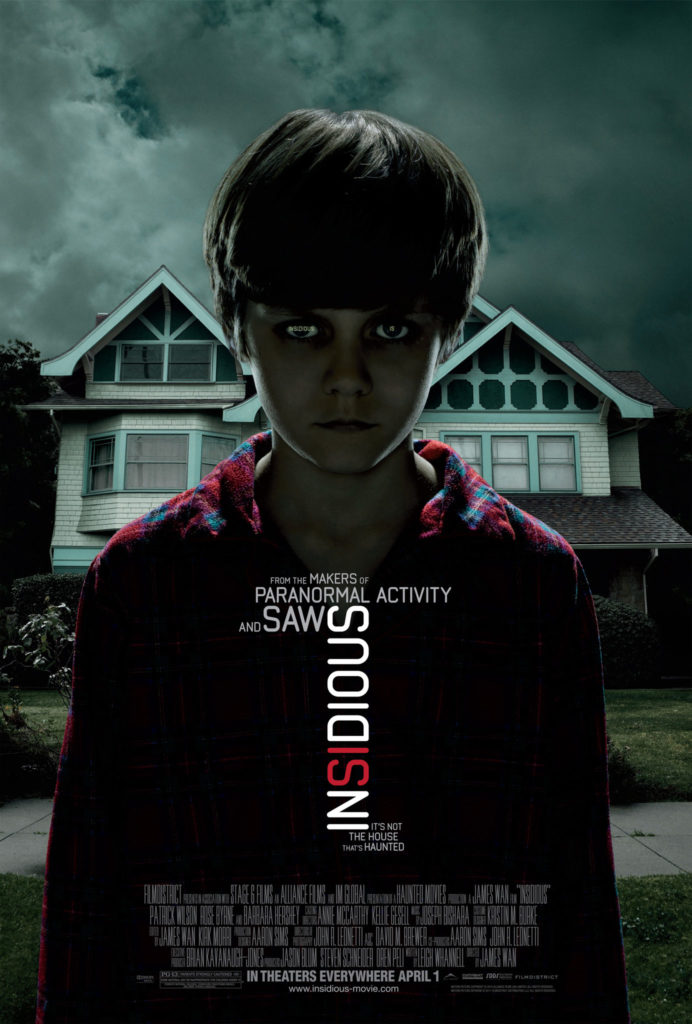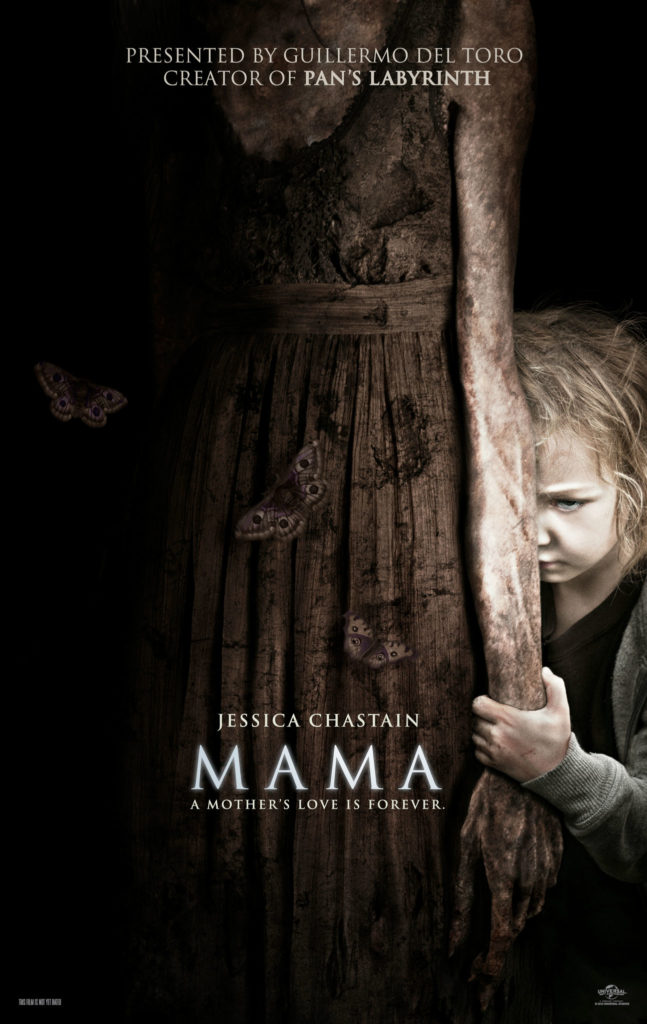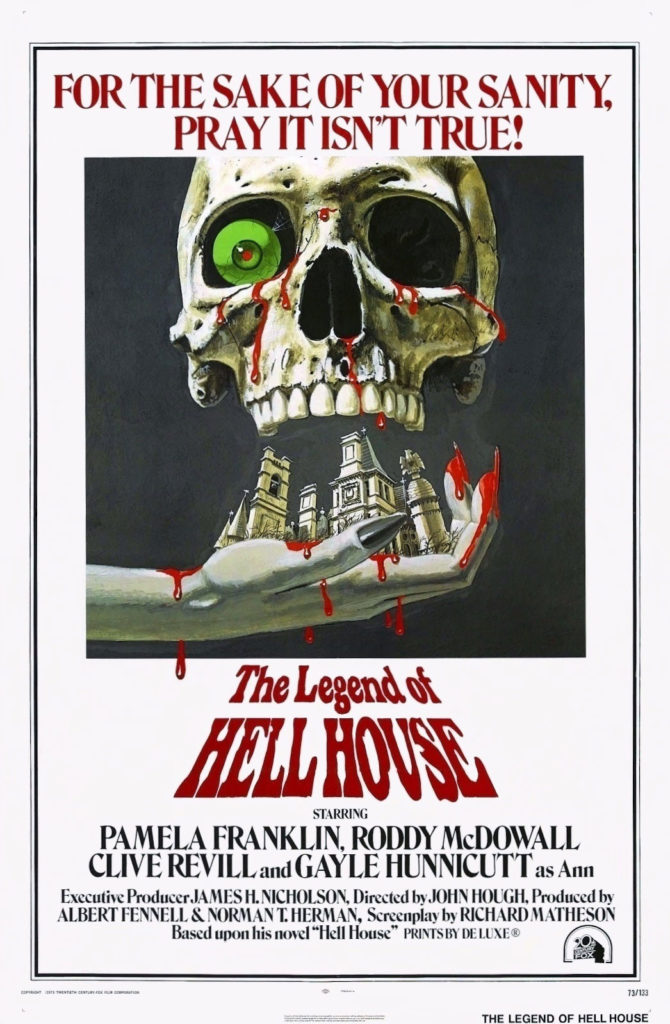 According to the IMDb page for Insidious, Leigh Whannell kept a list of horror movie clichés handy while he was writing the screenplay. He didn’t want his project to slip into the same predictable traps that mar so much horror cinema. With that list staring him in the face day in and day out, presumably, Insidious would turn out to be a film that was totally fresh, one that even audience members with hundreds of hours invested in the genre would find enjoyable. That is a very laudable goal, and a bit of a risk. Just because a film is formulaic does not mean it is a bad film. In its most basic sense, it just means the film will feel familiar to many people watching it. And as we all know, people like the familiar. As much as we like to pretend humanity is a collection of adventurous people, the opposite is in fact true. That’s why tourists eat at the same restaurants they have back home. It’s why popular music at times can sound like the same song done over and over again by a hundred different groups. And that’s why sequels, remakes, and carbon copies of previous successes make money at the box office. It’s just the way things are. Continue reading “Insidious”
According to the IMDb page for Insidious, Leigh Whannell kept a list of horror movie clichés handy while he was writing the screenplay. He didn’t want his project to slip into the same predictable traps that mar so much horror cinema. With that list staring him in the face day in and day out, presumably, Insidious would turn out to be a film that was totally fresh, one that even audience members with hundreds of hours invested in the genre would find enjoyable. That is a very laudable goal, and a bit of a risk. Just because a film is formulaic does not mean it is a bad film. In its most basic sense, it just means the film will feel familiar to many people watching it. And as we all know, people like the familiar. As much as we like to pretend humanity is a collection of adventurous people, the opposite is in fact true. That’s why tourists eat at the same restaurants they have back home. It’s why popular music at times can sound like the same song done over and over again by a hundred different groups. And that’s why sequels, remakes, and carbon copies of previous successes make money at the box office. It’s just the way things are. Continue reading “Insidious”
Tag: Scary Flick
V/H/S
Oh, no! Found footage?! Why?! Whyyyyyyyyy??!!!!!
All histrionics aside, do filmmakers still make horror flicks that don’t use the found footage method? Because it feels like it’s been awhile since I’ve seen one. Is it really too much to ask that filmmakers show skill as storytellers rather than resort to gimmicks? It may be. But what happens when gimmick is combined with good storytelling? That’s just crazy talk, right? Continue reading “V/H/S”
Mama
 The last horror flick I saw with Guillermo del Toro serving as executive producer was The Orphanage, from 2007. I reviewed it in last year’s Horrorshow, and while I did like it, I lambasted it for its derivative nature. This time around, the film del Toro chose to attach his name to is Mama, from writer/director Andres Muschietti. It’s also a fairly derivative horror flick, in that there’s not much happening on screen that will be all that unfamiliar to horror fans, but unlike The Orphanage, I couldn’t find any quotes online where the director is being a pretentious ass, so there’s that.
The last horror flick I saw with Guillermo del Toro serving as executive producer was The Orphanage, from 2007. I reviewed it in last year’s Horrorshow, and while I did like it, I lambasted it for its derivative nature. This time around, the film del Toro chose to attach his name to is Mama, from writer/director Andres Muschietti. It’s also a fairly derivative horror flick, in that there’s not much happening on screen that will be all that unfamiliar to horror fans, but unlike The Orphanage, I couldn’t find any quotes online where the director is being a pretentious ass, so there’s that.
Mama tells the story of two lost little girls and the ghost that loves them. Beginning during the financial crisis in 2008, a businessman played by Nikolaj Coster-Waldau goes on a murderous killing spree (thankfully off camera). He kidnaps his two young daughters and flees the city for the countryside. After a car accident, the trio are lucky to survive, and they seek shelter in an abandoned cabin in the woods. There, Nikolaj is about to finish off his bad day by killing his daughters, but a spectral apparition inhabiting the cabin gets to him first, saving the girls’ lives. Continue reading “Mama”
Poltergeist
So, who really directed Poltergeist? Part of the Hollywood mythos the last few decades treats this as an open question. Was it Tobe Hooper, the man at the top of the credits? Or was it producer Steven Spielberg? It was such a serious concern among the Directors Guild that they launched an investigation into whether or not Spielberg had tried to snatch credit away from Hooper. Honestly, no one involved is saying definitively one way or the other, but Hooper is a competent storyteller with fine directorial vision, and I can’t see him having a film taken away from him. That being said, it’s also hard to picture Spielberg letting a director that was not him have total creative control over a flick he was very much involved in as producer. So did Spielberg direct Poltergeist? Who knows, and who cares? Continue reading “Poltergeist”
Grave Encounters
Zombie flicks are my favorite horror film. Not only are they a subgenre of horror, they are a subgenre of post-apocalyptic fiction, which is a subgenre of sci-fi. That’s a lot of genre-ing going on. I like the post-apocalyptic stuff. Civilization on the brink or going down in a ring of fire. It’s fascinating. It gets the gears turning, but it’s not all that scary. That is, seeing society break down and enter a new dark age, no matter the cause (zombie horde, plague, nuclear war, etc.), is unsettling, but when I think of something being frightening in film, I’m not just talking existentially. I’m thinking of actually being scared of looking at the screen. For that, there’s nothing better than the first half of a ghost film. Continue reading “Grave Encounters”
Halloween
Halloween, the granddaddy of all slasher flicks. Not the first, to be sure, but a film whose formula worked so well it is still being followed to this day in countless horror films, thirty years after it was produced. It also doesn’t hurt that, unlike many of the films it birthed and inspired, Halloween is well made. Continue reading “Halloween”
The Legend of Hell House
 The fear that we create in our minds in anticipation of unpleasant events is more often than not more powerful than the event itself. Also, the actions of unseen forces are more unsettling than those by forces we can see, and can thus relate to and understand. Along these lines, in horror cinema, the most frightening ghosts are of the unseen variety. They make their presence felt by being menacing, by toying with those who trespass on their realm. They make noise. They bang, shuffle, and walk loudly across hardwood floors. They spark chills and cold winds. They speak, threaten and cajole. Eventually they move things around, simply and quickly, such as doors opening and closing by themselves, books falling off of shelves, etc. It’s usually around here that the separation is made between good ghost films and bad ghost films.
The fear that we create in our minds in anticipation of unpleasant events is more often than not more powerful than the event itself. Also, the actions of unseen forces are more unsettling than those by forces we can see, and can thus relate to and understand. Along these lines, in horror cinema, the most frightening ghosts are of the unseen variety. They make their presence felt by being menacing, by toying with those who trespass on their realm. They make noise. They bang, shuffle, and walk loudly across hardwood floors. They spark chills and cold winds. They speak, threaten and cajole. Eventually they move things around, simply and quickly, such as doors opening and closing by themselves, books falling off of shelves, etc. It’s usually around here that the separation is made between good ghost films and bad ghost films.
Good ghost films try their best to maintain the creepiness of an unseen entity’s actions, even while the audience is quickly growing accustomed to being in a haunted house or hotel, or wherever. Bad ghost films just chuck all restraint and set up a titanic battle between good and evil, slave to special effects under the belief that seeing a big bad scary ghost in an explosive finale is what the audience craves after spending the first half of the film scared out of their wits. Continue reading “The Legend of Hell House”
1408
For about half the film, Mikael Håfström’s 1408, based on the Stephen King short story of the same name, is creepy and frightening. By then, the viewer has grown used to Mike Enslin’s (John Cusack) predicament, and the film has no other alternative than to fall into convention. That’s unfortunate, because if Håfström had been able to sustain the atmosphere of the first half throughout the film, it would rank among the best ghost films of all time. A lot can be said for a film with potential like that. Continue reading “1408”
The Thing
Last week saw a unique event in film. Four John Carpenter films landed in Brooklyn as part of a mini-retrospective at the Brooklyn Academy of Music (BAM). The featured films were Big Trouble in Little China, The Thing, They Live, and Escape from New York. All unique films from a unique filmmaker. B-movie schlock artist or perennially misunderstood genius, depending upon who’s doing the watching, Carpenter is a knowledgeable director who draws on his education, talents, and the best aspects of low-grade cinema to craft films that are unmistakably his. As soon as the opening credits roll, one enters Carpenter’s world. Viewer hears music (usually) from Carpenter’s own synthesizer, and the credits themselves are all the same white serif font on a black background, no matter which of his films is playing. Anamorphic lens effects and dark lighting cross among his works. Finally there is the thematic distrust of authority as a conceptual continuity throughout. All of this makes Carpenter’s films easily recognizable to anyone with even a cursory knowledge of his oeuvre. Continue reading “The Thing”
Alien
Always beware when a series of films has been labeled a franchise. Often it can mean that any effort to bring quality to the screen has been abandoned to embrace the industry’s insulting perceptions of mass taste. Such has been the fate of the Alien series of movies. The last entry that remained within the original continuity, Alien: Resurrection, was so awful it effectively killed the series. Since then, it has truly embraced the franchise label, making reality longstanding plans to team up with the Predator franchise, following a trail the comic book wings of the two brands began blazing in the 1980’s. Continue reading “Alien”
